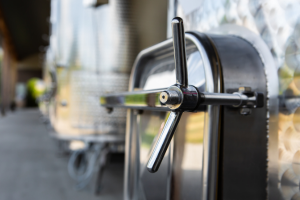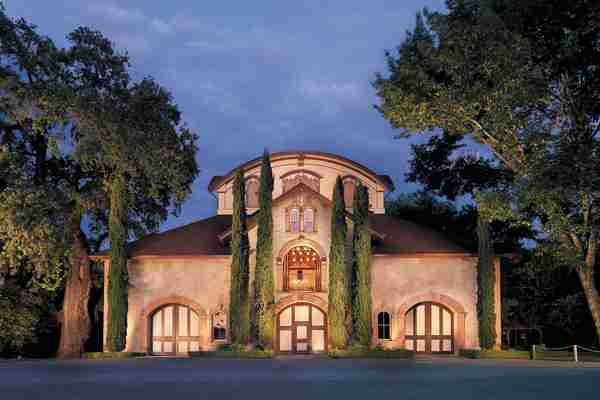The Ultimate Guide To Unoaked Chardonnay
What does unoaked Chardonnay mean? Learn the basics, how it’s different from oaked Chardonnay, what food to pair, and find out our tasters’ top picks.
When you hear the word “Chardonnay,” what is the first thing that comes to mind? Do you think of that rich and buttery feeling and that intense aroma of vanilla?
If that’s the case, you have a clear definition of what oaked styles of Chardonnay wines are like.
But, there is a different style that is quickly becoming a favorite among consumers around the world – the unoaked Chardonnay.

What is Oaked Chardonnay?
Traditionally, Chardonnay wines are aged in oak barrels to add richness, depth, and complexity to the wine. Unlike many other white wines, like Sauvignon Blanc or Riesling, Chardonnay doesn’t naturally have layers of intense aromas and flavors.
It is quite a neutral wine, which is why most winemakers have opted for barrel-aging to allow more aromas and flavors to come forth in these Chardonnays.
The problem is that many winemakers used too much oak, and in the 80s, there was a massive backlash from consumers who joined the “ABC” club – Anything But Chardonnay.
More consumers rejected the idea of Chardonnay and opted for more light and fresh wine, shunning Chardonnay and its richness.
Fast-forward to 2023, and unoaked Chardonnay has taken the market by storm. These styles are equally as light and refreshing as their oaked counterparts.
While oaked Chardonnay wines have not died out, they are significantly less oaked, buttery, and vanilla-focused than forty years ago.
What Is unoaked chardonnay?
Flavor Profile of Unoaked Chardonnay
- Aroma: Expect citrus zest, green apple, pear, melon, tropical fruits, and sometimes floral notes.
- Taste: Crisp, clean, and refreshing with bright acidity. Flavors can range from citrusy to stone fruit, with hints of minerality depending on the region.
- Finish: Dry and refreshing, often with a lingering acidity.
You can expect a bright, light yellow color with these unoaked styles, which is an excellent contrast to the dark, golden oaked styles.
The aromas are fresh, often with dominant citrus aromas and beautiful minerality. These wines are also considered lean, meaning that there is no fatness or richness to the wine, making them ideal for easy-drinking occasions.
Depending on where the wines are grown, you can expect aromas like lemon, orange, green apples, chalk, and even floral notes.
The acidity of Chardonnay is naturally relatively high, so these wines will offer a fresh, crisp feeling. In many instances, winemakers allow the wine to go through malolactic fermentation, which is essentially a process of changing the acidity in the wine so it tastes less tart and more rounded.
This process doesn’t make the wine heavy but does add some body.
Flavor Differences
- Unoaked: Think crisp, clean, and fruit-forward. Unoaked Chardonnays highlight the natural flavors of the grape, like green apple, pear, citrus, and tropical fruits. They’re typically lighter-bodied with bright acidity and a refreshing finish.
- Oak-Aged: Oak barrels impart richer, rounder flavors like vanilla, butter, toast, and spice. These Chardonnays can be fuller-bodied with a creamy texture and a smoother finish.
Popular Unoaked Chardonnays by region
Chablis
The classic unoaked Chardonnay region, known for its minerality and citrusy notes.
New Zealand
Known for their Sauvignon Blanc, many New Zealand wineries also produce excellent unoaked Chardonnays with tropical fruit flavors.
California
California produces a wide variety of styles, including unoaked Chardonnays with ripe fruit flavors and balanced acidity.
Argentina
Argentinean unoaked Chardonnays often have a touch more body and richness than their French counterparts.
Best Unoaked Chardonnay Staff Picks
- Kendall-Jackson Avant Chardonnay: A popular choice with bright citrus and tropical fruit flavors, known for being affordable and easy to find.
- Saracina Unoaked Chardonnay: Saracina is a vibrant and refreshing option with Anjou pear, nectarine, and stone fruit notes.
- Toad Hollow Unoaked Chardonnay: A consistent favorite with aromas of apricot, melon, and pineapple, offering good value for the price.
- Zolo Unoaked Chardonnay: This Argentinian Chardonnay offers a touch more body with tropical fruit flavors and a hint of minerality.
- Dominican Oaks Chardonnay: Made in California, this wine displays all the typical unoaked Chardonnay notes, as well as beautiful pear and apricot notes.
- Fox Run Doyle Family Chardonnay: Experience the lightness and brightness of Chardonnay with this Finger Lakes Chardonnay.
- River Road Chardonnay: Another Californian beaut, expect beautiful floral notes and a hint of sweetness with this wine.
Unoaked Chardonnay food pairing
The beautiful thing about unoaked Chardonnay is its versatility when it comes to food pairing! Here are some options based on different flavors you might be looking for:
Light and Fresh
- Seafood: Think poached or grilled white fish (cod, halibut, sea bass), shellfish (clams, mussels, scallops), sushi, or sashimi.
- Salads: Fresh, vibrant salads with light dressings (vinaigrette, citrus-based) or goat cheese.
- Appetizers: Fresh vegetable platters with hummus, shrimp cocktail, goat cheese crostini.
- Soups: Creamy vegetable soups, like cauliflower or potato leek, or light cream sauces on pasta.
Fruity and Aromatic
- Chicken: Roasted or grilled chicken with herbs and lemon.
- Pork: Seared pork tenderloin with apple sauce or chutney.
- Aromatic Curries: Thai green curry, Indian coconut curry (avoid overly spicy options).
- Vegetarian: Dishes with tropical fruits like mango, papaya, or avocado.
Minerality and Acidity
- Oysters: A classic pairing, the minerality in the wine compliments the brininess of the oysters.
- Goat Cheese: Simple goat cheese salad or creamy goat cheese pasta.
- Grilled Vegetables: Asparagus, zucchini, portobello mushrooms.
- Pizza: Margherita pizza with fresh mozzarella and basil.
How Unoaked Chardonnay Is Made

The winemaking process for Chardonnay is pretty standard. Like most white wines, the grapes are harvested, crushed, separated from their skins, and fermented in steel tanks. These steel tanks preserve the freshness and natural aromas of the wine.
The wine will then either be put through malolactic fermentation (a process where a bacteria called Oenococcus oeni is used to convert some acid in the wine into lactic acid creating a creamy, buttery texture) and then bottled or simply bottled immediately.
This process is a stark contrast to the oaked styles of Chardonnay. These oaked wines can be fermented in oak barrels, which add intense oak characteristics. Or, for a less oaky feel, the winemakers ferment the Chardonnay and stainless steel and then transfer it to oak barrels for a few weeks or months for a touch of oak aroma.
About The Author
I’m Patricia, and I have a healthy obsession with wine. So much so that I started a YouTube Channel called “Understanding Wines,” which is dedicated to teaching others about wine. My wine journey began when I was only 19. I completed our local Cape Wine Academy Certificate and went on to do WSET (Wine and Spirits Education Trust) level 3 and ISG (International Sommeliers Guild) Intermediate and Advanced Certificate. My focus has always been on helping others better understand wine, so I became a full-time wine copywriter and continue working on my channel.









